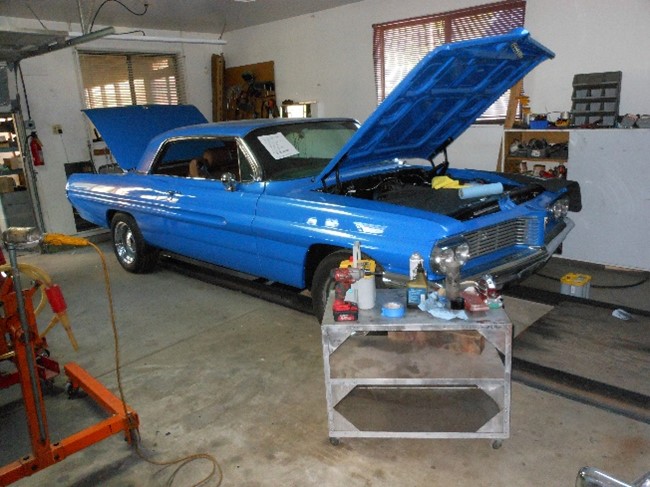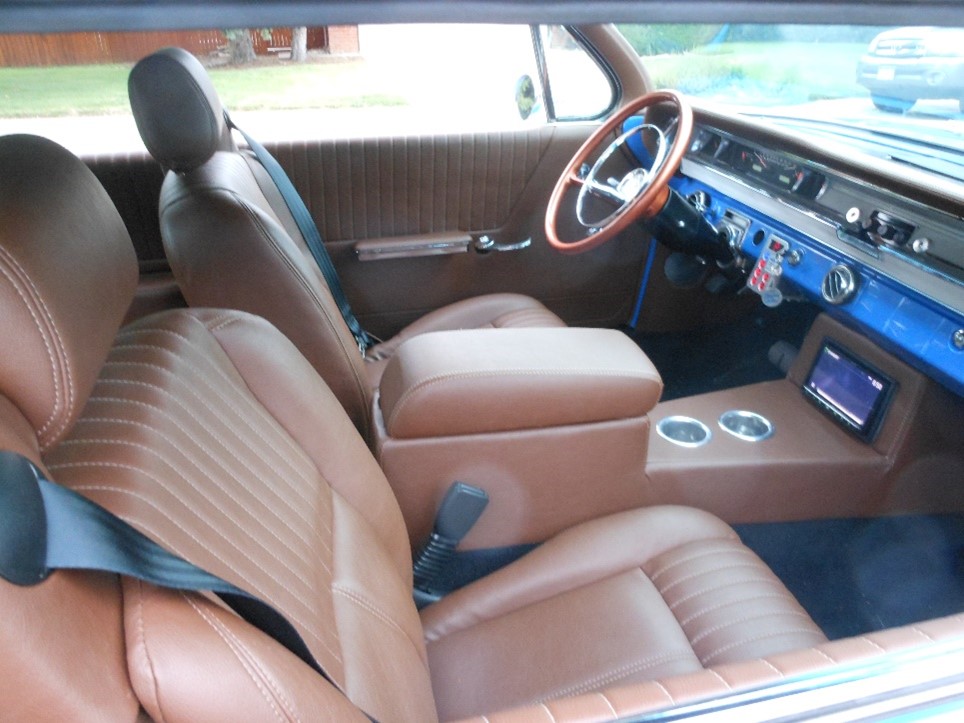With the dog days of August soon to be upon us, I thought I would continue my series of self-improvement posts to advance my writing skills. With a long history of writing sober engineering and marketing reports, I feel that I am behind in developing any skill in the communications methodology required of politicians and radio talk show hosts. I think the adjective “bombastic” is appropriate for defining this skill.
bom·bas·tic: high-sounding but with little meaning; inflated

I have chosen as a practice topic the commissioning of my restomod 1962 Pontiac that I call the “Blue Bird.” When doing extensive restoration or modification of an automobile, there comes a time when all the major work is done, and what remains is to get the car tested and ready for use on the highway. This task can be both painstaking and vexing, so it is a good topic for bombastic writing.
Here goes. . .
After a horrendous amount of labor and much expenditure, the Blue Bird has grudgingly arrived at an auspicious point where it can be made to demonstrate its readiness to enter the world of ultra-high performance cars that attract the admiration of those whose sedentary lives do not allow them to venture into the exotic world of high performance machinery. Smugly showing off the beauty of the stunning blue finish on its world class sleek body, I could only wonder if the awesome potential of its fabled engine and chassis will gracefully submit to the rigors of testing demanded by the owner and even society in general. While it remains aristocratically above the pedestrian vehicles that contaminate the highway, it still must conform to social norms as established by insensitive government regulators. Such unnecessary and obnoxious considerations established by them must now be confronted.

Starting the powerful LS-3 engine is a thrill that awaits the driver when he turns the ignition key with trembling excitement and a tinge of nervousness to bring the Blue Bird to life. I am rewarded by a sharp snarl that quickly settles down to a smooth powerful idle that surges to an ominous growl with the slightest movement of the gas pedal. The message is clear: “You have brought me to life; are you man enough to control my beastly behavior?!?”
The newly reupholstered seats grafted out of a Cadillac are positioned for optimum comfort and the moment is at hand to push the D button on the shifter panel and put the car into a smooth and powerful motion.

With no license plate on the bumper, the decision is made to foray onto the quiet street and stealthily go a short distance to evaluate the basic performance of the car. The steering and brakes are gingerly tested and found to perform in an acceptable manner. This is most comforting – so far, so good.
A short burst of acceleration is a total revelation as the power of the engine gives a strong hint of the force contained under the hood by pushing me back into the seat. It is then that a horrible fault is revealed. There is an ominous knock that can be traced to the floor pan behind the front seat. This can mean only one thing: THE DRIVESHAFT IS HITTING THE FLOOR PAN. This could be the harbinger of great tragedy. Will it be necessary to remount the transmission, or perhaps remove not only the floor carpet and sound insulation but also cut the floor pan and fabricate a new patch panel? Is the whole project going to be set back months because of this massive potential complication?
A problem of this magnitude requires the skill of a master mechanic and restoration specialist to resolve, aka Dusty Price, the genius responsible for the design and fabrication of the car. It is with calm resolve that only those possessing extraordinary ability can muster that Dusty goes down in the pit to survey the problem, while I wait above with an aching heart to learn the verdict of what has gone so tragically wrong, and how it can be fixed.
Dusty climbs the ladder to exit the pit, and I scan his face to see if there is hope or despair on the horizon. In a soft, careful manner so characteristic of those with calm resolve, Dusty says that he can fix the problem through removal of a shim from the transmission mount. I practically faint as I emit a sigh of relief that my worst fears are not coming true, and that progress will not be halted. We celebrate by drinking a cold beer. The Blue Bird will soon be on the road.

IN CONCLUSION
After years of writing engineering reports with a specific scientific slant to them, I find writing like this to be difficult as I want to revert back to my more direct “tell it like it is” method.
By using a less colorful mode of communication, I would say:
“When I test drove the Pontiac on the neighborhood street, the driveshaft rubbed the floor pan and made a knocking sound. Dusty removed a shim under the transmission, and that cured the problem.”
OK – not as exciting, but very direct in communicating the situation.
Since we take the time to name our cars, it seems only appropriate to use the colorful mode of communication to bring the personality of the car to life and to illustrate what it took to get to the end result.
